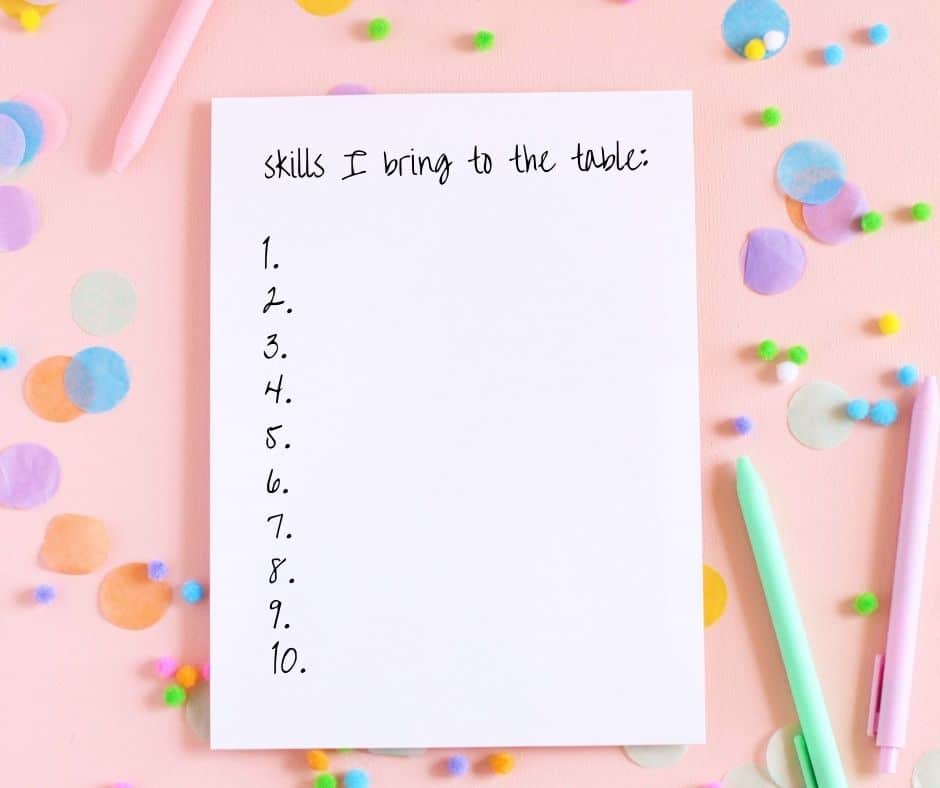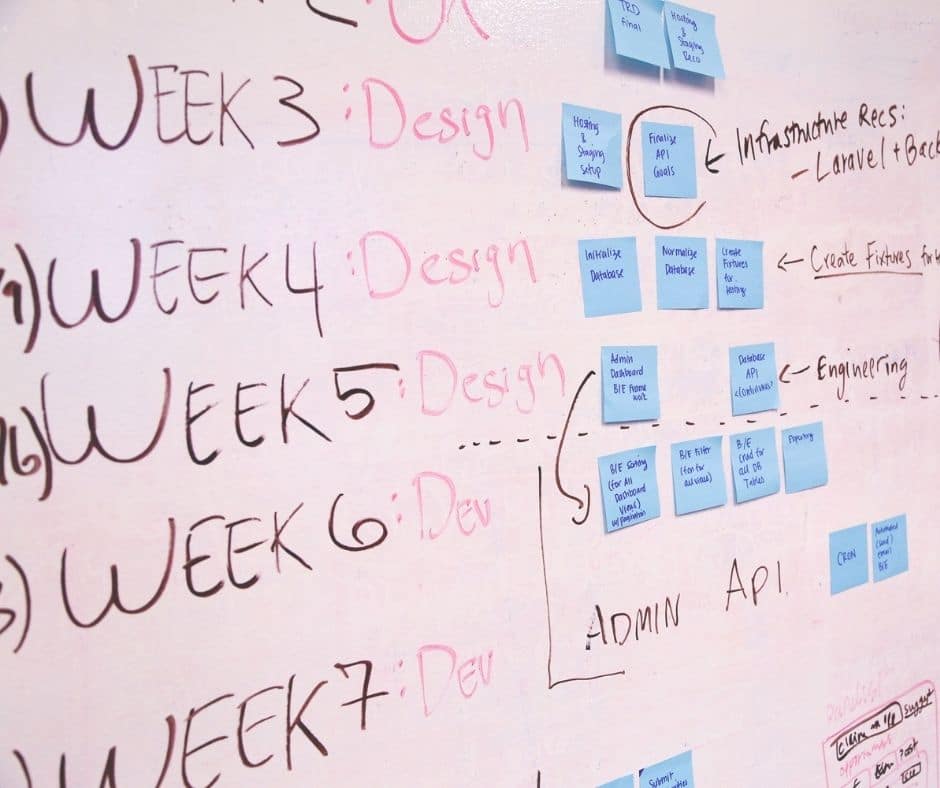Simple Steps to Reverse Engineer Any Goal
Great minds think backwards.
Well, the original quote is “great minds think alike”, but in this case, it still applies – because look at any highly successful person, and they’ll tell you that the secret to achieving ANY goal they set their mind to, starts with thinking backwards.
Great minds reverse engineer.
Reverse engineering is a simple shift in the process of creating something (anything!) that yields BIG results and works just as well when reverse engineering goals.
Our first instinct is to look at where we are, and think “What’s my next step from here?”
When you think backwards, you look at where you want to be and think, “How did I get there?”
[cboxarea id=”cbox-F7CUBIpvMpO5iwiT”]
Reverse Engineer ANY Goal – In 5 Steps
Typical goal setting has you starting from where you’re at right now and doing things that you hope will get you to where you want to be. When you reverse engineer your goals, you start at where you want to be, and trace your steps backwards to find out how you get there.
Sound complicated? It’s actually very simple. And the process can be broken down into only five steps.

Let’s say your goal is to make $100,000.00 this year selling ebooks.
That’s a pretty big number. It looks a little daunting.
But when you reverse engineer your goal… it starts to take a different shape.
$100,000 in one year is $8,333.33 a month. It’s also $1,923.07 a week, or just $273.97 a day.
You might not be in a position to make $100,000 right now. But you can probably make $273.97. That’s not that scary of a number at all.
Let’s say your ebook is priced at $20. You know what that means? You only have to sell 13 ebooks a day.
13 is a WAY MORE DOABLE number to stare down than $100,000.
What if you upped the price of your book to $25? Then you only have to sell 10 ebooks a day… and you’ll make $100,000 this year.
Now that you know exactly what you have to do to make that $100k, you’re in a solid position to formulate a plan for those ten daily sales. All you did was reframe your goal – you reverse engineered your goal – and all of a sudden, that goal feels different in your mind.
You’re in a much better position to achieve that goal than you were ten minutes ago. And you haven’t even started yet.
And you can apply this to ANY goal, when you break it down into steps:
Step 1: Know Exactly What You Want
First you have to be crystal clear on what exactly your goal is.
It’s no good to run around saying, “I want to lose weight”. That’s a crappy goal. All you have to do is weigh yourself before and after you take off your shoes and coat and voila! You’ve lost weight. But I’m pretty sure that’s not exactly what you were going for.
Get specific. What exactly is your goal and when do you want it by? What’s your timeframe? How will you know you’ve achieved it?
If your goal starts out a little more vague, you have to come up with a way to quantify it.
“I want to be a professional musician.” That’s well and good, but what’s your benchmark for success?
Is it when your music makes enough money for you to fully live on? Are you monetizing your music through live gigs, spotify plays, youtube?
Will you be happy just building a thriving community of fans and the money doesn’t matter right now?
Figure out what you will aim for as a landmark for success. When will you know you’ve made it?
If you don’t even know what you want, how on earth are you going to make it happen?
Step 2: Know Exactly Where You Are
Where you are right now is ground zero. This is your starting line.
But no matter what your goal is, you already have some skills to bring to the table. You’re never starting completely from scratch.
Even if you don’t know the first thing about beekeeping but are determined to become the go-to source for organic honey in your community, you’re still building off of a base of skills and prior experience.
All of those exhaustive research papers they made you do in high school? You now know how to acquire and analyze information, and distill it down into exactly what is relevant to the assignment.
Maybe you know a beekeeper, or know how to figure out where to find one.
If you’ve got two feet and a heartbeat, you’re already stocked with most of what you need to get you to a fitness goal.
Make a list of all the skills you bring to the table. Everything you’ve learned through school, work, or life experiences that could possibly help you on your journey with this goal, even if you’re not sure how just yet.

You ran track & field one year in high school? Check.
Had a horrible boss who demanded perfection in every task? Check.
Are you really good at differential equations? Write that one down too.
You never know what’s going to come in handy to you.
Once your list is done, go over it and highlight the things that you know will help you hit this goal.
The attention to detail you developed under that awful boss is 100% going to come into play while you learn to play complicated chords on the piano. That one year in track and field helped you develop the discipline that will for sure come in handy as you navigate your new journey of learning German.
Even if you don’t feel like it right now, you’re never starting with nothing. Your whole life has been building you up to this point – where you have the skills and drive to accomplish anything you set your mind to.
Step 3: Reverse Engineer That Goal
How you do this is going to be unique to different types of goals, but they will all follow the same idea.
Take the end point of your goal – your finish line – and, working backwards, figure out how you get there.
Let’s say your goal is to buy your family a house. If you’re starting from today – looking around at the too-small apartment you’re currently living in, your mess of a bank account, your shoddy credit score – that seems forever away.
But leap forward, to the day you buy the house. Look at yourself, smiling on the porch, holding the keys. Ask that person: What happened yesterday to propel you towards this? The day before that?

To buy a house, you need a down payment and a decent credit score. Okay, how do you get those? Paying down your debts, paying your bills on time, saving money. Okay, what’s your action plan for doing those things?
For a goal that can be measured in numbers this is easy.
Like our first example above on making $100,000 through ebook sales, it’s a matter of breaking the numbers down into their bite-sized counterparts and formulating a plan to achieve those consistently.
NaNoWriMo is a perfect example.
If you’re not familiar with it, NaNo (short for National Novel Writing Month) is an event that thousands of writers participate in across the globe. The challenge is to write an entire first draft of a novel – beginning to end – in a month.
Sounds daunting, doesn’t it?
Yet many, many people do it every year. And if you ask someone who’s “won” NaNoWriMo (hit their word count and completed a first draft) how they did it, they’ll tell you the same thing:
50,000 words in a month is 1,660 words a day. And that can take just an hour if you’ve planned out your plot beforehand (and have a good typing speed).
Figure out your numbers, and break them down into daily goals. A novel in a month seems impossible – but 1,660 words a day can be done over morning coffee, or by cutting back on evening Netflix.
That’s how you reverse engineer a goal, and that’s super doable.
For a goal that can’t be measured in numbers –
For some goals, breaking it down into numbers isn’t the solution. As an example, say you want to teach yourself to play the guitar. It’s not as simple as playing for an hour every day, although for sure that can be part of it.
For non-numerical goals, break them down into milestones.

If for you, “knowing how to play guitar” means having an assortment of songs you can already play and the confidence to learn anything else you want, then first decide how many songs you want to be able to play by memory.
Make lists of these songs, from the simplest to most complicated.
You know you’ll have to start by learning the chords, getting familiar with the guitar itself, so start there – and then start working your way through your songs.
While I was writing this post, I got curious if I could find a cool example of someone reverse engineering music for you guys, and I found this really great post on how to reverse engineer a song to get started with music production. How awesome is this method?!
But let’s say your goal is something much more tangible. You want to open a beachside boutique in your town.
Let’s work backward from your end point to figure out what you need to do. What are the main components of running a boutique?
Well, you need a storefront. And you’ll need stock, and probably staff. How do you get those?
Remember that these aren’t even things you’re expected to already know how to do. Every successful boutique owner once hit a wall where they thought, “Wait. How do I do this, exactly?” Never underestimate the power of your willingness to learn.
Even just a simple Google search of “How do I find stock for a boutique?” turns up 381 MILLION results.
Whatever your goal is, start with the end in mind and figure out what your steps are to get there.
Step 4: Formulate the Plan
Once you have the steps you need to take figured out, you have to decide upfront what to do about it.
It’s all well and good to say, “I need to write 1,660 words a day” but if you don’t take the time to plan that into your day, it’s not going to happen.
You’ll be going to bed at the end of the day saying, “Whoops, totally didn’t find time for that! Well, I’ll do it tomorrow”.
Hint: The phrase, “I’ll do it tomorrow” has never helped someone change their life.
If you use a planner or similar method to organize your time, go ahead and schedule in your goal work now. Even if you don’t, make a mental plan on how you’re going to incorporate your steps into your days.
Will you use your lunch break for certain tasks? Wake up earlier and practice for that extra hour every day? How will you handle obstacles that may come up?
Reverse engineer your time the same way you reverse engineered your goal, and you’ll have a complete plan of action for accomplishing something you previously thought was WAY too big to handle.
If you don’t currently use a paper planner – get one. Seriously. Having a tangible plan in front of you to follow is going to make your time management SO much more effective. Here’s a guide on getting started with a planner in 2022.
Bonus tip: Here is a basic paper planner (that comes with some really cute stickers too!):
Step 5: Stay the Course
Once you have your plan and know what you need to do, the only thing left to do… is do it.
Sounds super simple, but this is the part where most people slip up.
You have to commit to your actions, daily. This is your goal – no one is going to do the work but you.
But if you’re here and you’re reading this, I believe you have fully what it takes.
Let’s get ready to change your life.
Reverse Engineer Your Goals
Looking for some more ways to work on setting goals? Check out these posts:
- The Exciting Benefits You Can Expect From Goal Setting
- When SMART Goals Don’t Work for You, Use these Goal Setting Activities Instead
- Process Goals – What They Are, And Why They’re Crucial
- The Secrets of People Who Always Hit Their Goals
or our eBook/Audiobook on getting goal setting done in 10 easy steps:
Pin it on Pinterest:










